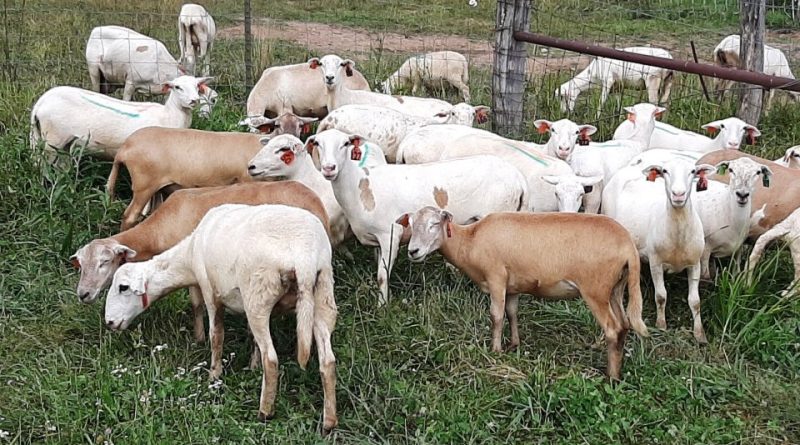Katahdin
Katahdin
The Katahdin sheep breed is a sheep (Ovis aries Linnaeus, 1758) originally from Maine (USA) with a main aptitude for meat production.
Systematics –
From a systematic point of view it belongs to:
Eukaryota domain,
Kingdom Animalia,
Phylum Chordata,
Mammalia class,
Order Artiodactyla,
Suborder Ruminantia,
Bovidae family,
Subfamily Caprinae,
Genus Ovis,
O. aries species,
Katahdin breed.
Geographic and Area Distribution –
The Katahdin is a sheep developed in Maine, USA and named after Mount Katahdin, which is the highest peak (1606m) in Maine (USA). It is located in Baxter State Park 20 miles northwest of Millinocket in Piscataquis County in the east central part of the state.
In recent times this breed, due to their characteristic of naturally shedding wool, has spread to the United States due to low wool prices and high shearing costs.
Furthermore, this breed has spread throughout North America but also in Mexico, Ecuador, Jamaica, the Dominican Republic, the United Kingdom, Chile and Central America.
Origins and History –
The Katahdin sheep breed was selected by breeder Michael Piel in Maine, USA during the second half of the 20th century by crossing selected Virgin Islands St. Croix sheep with various other breeds, including the Suffolk. The lambs were selected on the basis of their hair, the conformation of the type of meat, their high fertility and herd instinct.
The Katahdin was the first sheep breed to meet the carcass quality standards of the sheep industry in the United States. One of the outstanding characteristics of this breed is that it sheds its winter coat, so it doesn’t need to be clipped. The coat of the Katahdin does not have a fixed standard as the breed has been selected more on the productive than external aspects.
Also when the Katahdin is crossed with wool sheep, their offspring usually have a mostly wool coat with some hairs mixed in.
Additionally, the Katahdin breed is also resistant to parasites, a genetic trait inherited from its St. Croix ancestors; these characteristics make the breed a highly productive and low-cost option for shepherds.
Morphology –
The Katahdin sheep breed is characterized by a coat of variable color as the selection has held more of the production characteristics than of the external appearance.
The subjects were selected on the basis of the characteristic of naturally shedding, the conformation of the type of meat, the high fertility and the aptitude for breeding.
Males weigh between 80 and 110 kg, while females between 55 and 70 kg.
Productive attitude –
The Katahdin sheep breed is a sheep with a main aptitude for meat production.
As mentioned, one of the salient features is that sheep lose their wool naturally and do not need to be shaved. They also have excellent resistance to parasites.
These sheep adapt very well in a variety of situations and therefore are a low maintenance and easy grooming breed.
Katahdin ewes therefore offer a practical option for producers who are primarily interested in raising a beef animal, with great lamb vigor, maternal ability and either do not want to shear or are no longer able to find shearers.
We report, among other things, that in a recent statement by Dr. Dave Notter of Virginia Polytechnic Institute and State University (US animal science geneticist), said the backbone of America’s future commercial herd will be sheep with resistance to parasites, low maintenance costs, high fertility/prolificacy, good maternal and which does not produce wool at all or produces very high quality wool.
Guido Bissanti
Sources-
– Wikipedia, the free encyclopedia.
– Daniele Bigi, Alessio Zanon , 2010. Atlas of native breeds. Cattle, horses, sheep, goats, pigs reared in Italy, Edagricole-New Business Media, Bologna.

